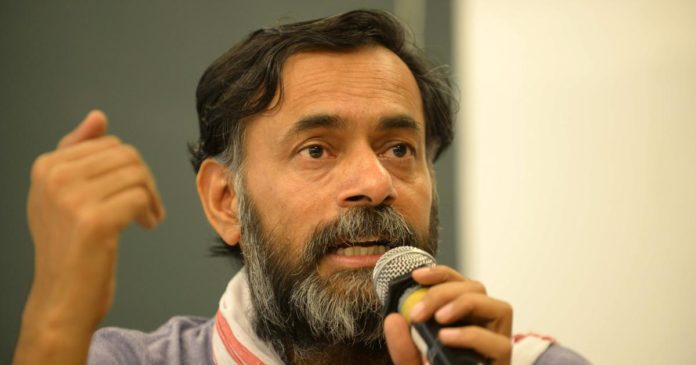The idea of India faces an unprecedented challenge. Preventing a dismantling of the Republic of India, as we have known it, is the most pressing political task of our times post the 2019 verdict. This is our yugadharma. So far the response to this challenge has been marked by intellectual lethargy, political paralysis, and the opposition’s obsession with mere anti-Modism.
Opposition to the Modi regime is marked by an inability to fathom the extent of the challenge it poses, unwillingness to recognize its deep roots and failure to think beyond quick-fixes. So far, the Modi regime has evoked a series of predictable responses from its opponents: a passive wait for the bubble to burst; simple-minded anti-Modiism attempts to take on the regime on its own turf and trying to build a grand coalition of the discredited anti-BJP parties. None of these strategies has succeeded so far, none is likely to succeed.
In their obsession with Narendra Modi, his critics make him a larger-than-life figure. In their desire to counter Modi’s attempt to take credit for everything positive, they end up producing a mirror image: Modi critics tend to blame Modi for everything. A lynching in some corner of the country, the failure of one agricultural policy, badly managed balance sheet in the Budget – everything is blamed on the PM. Modi critics do as much publicity for him as his fawning supporters.
Second, most Modi critics suffer from knee-jerk anti-Modism. Since a policy or an action is associated with him or his government, we must oppose him. I suspect that much of the criticism of many policies of this government is because it was produced under the Modi government. Besides, Modi critics tend to have it both ways. If he dies one thing, we attack him. If he were not to do so, we would have attacked him even more furiously. The trouble with this routine, knee-jerk opposition is that it loses the public. People see it for what it is: opposition for the sake of opposition.
Third, and most importantly, Modi critics live in denial. They fail to acknowledge Modi’s popularity and fail to understand the reasons behind it. The inability to foresee the outcome of the 2019 Lok Sabha elections was a classic illustration of this failure. No doubt, Modi’s popularity had dipped in the second half of 2018. But post-Pulwama and post-Balakot, his popularity was head and shoulder above all the opposition leaders put together. After that, the election was no contest at all. But most Modi critics were disconnected from this reality. Even after the election results, many Modi critics continue to live in denial. They find it hard to acknowledge that the BJP won, not because of any EVM manipulation but because people wanted to give Modi another chance.
Such a failure to acknowledge Modi’s popularity leaves little room to understand the reasons for it. It is nearly impossible for Modi critics to see those ordinary voters may have had good reasons to vote for Modi. Just as American liberals find it impossible to believe that anyone within their senses could vote for Donald Trump, Modi critics find it impossible to make sense of an ordinary Indian voter. Modi critics find themselves in a smaller and yet smaller circle of opinion, culturally cut off from the rest of society. The end result is disbelief, anxiety, and angst, but no meaningful action. This is a recipe for political paralysis.
We need to make a fresh start. We need to acknowledge that we have entered a new political age. We need to admit that popular preferences, taste and indeed yardsticks have changed beyond recognition. We need to confront that our older vocabulary does not work with the new generation, that many of our tactics fall flat on its face. We have lost touch with the pic and we cannot elect a new people. The only way forward is that we appreciate the dangers, acknowledge the depth of the challenge and then prepare a road map that combines short- and mid-term strategies with a long-term vision. In the last instance, it is a cultural battle that has to be won with the help of innovative ideas and smart communication.
The author is the national president of Swaraj India.




Everyone is saying something had to be done but no one seems to have an answer as to what is to be done. I feel a movement like Gandhiji’s SATHYAGRAHA has to be started. The emphasis should not be on gaining power or dislodging someone from power but make the millennials understand the true meaning of FREEDOM and instill new hope that we can really make a difference.